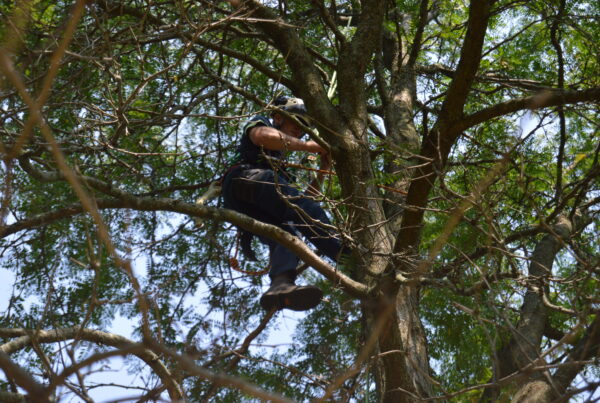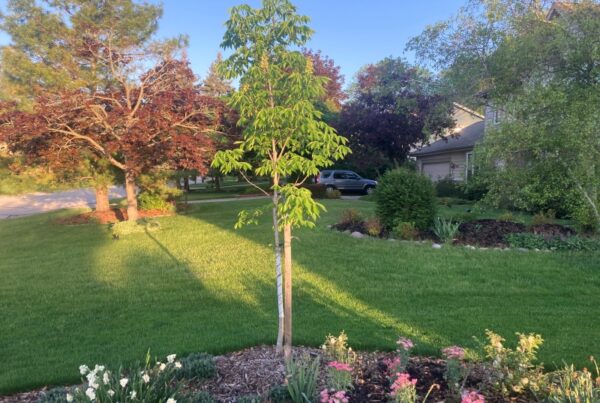During October and into November, be on the lookout for deer destroying your trees.
The annual fall ritual of buck rut is upon us, when deer are rubbing trees to clean the summer velvet from their antlers and marking their territory during mating season.
Just how bad can this be for trees?
Rubbing antlers against tree trunks is one issue, but buck deer – making loud noises to designate their territory – also bruise and batter tree branches with their rack. They tend to target younger trees because the smaller branches are just the right size to strike between their antlers.
If your landscape includes young trees – perhaps one to four inches in diameter and are covered in smooth bark – they are quite vulnerable to damage during rut. The deer’s actions can destroy the tree to nothing but a stub.
How do I prevent damage?
- Trunk guard – To keep deer away from the tree’s trunk and branches, we recommend a plastic sleeve or guard to surround the trunk and protect the bark. These are easy-to-use, inexpensive fixes and available in local retail stores.
- Temporary fencing – If you have a larger property with many small trees, you could consider fencing off the entire area during the rut season from September through November. Keep in mind that a temporary fence should be at least six to eight feet tall. Deer can easily jump and pass over anything lower.
- Steel posts – Add a couple of steel posts next to your trees to discourage deer from getting too close.
What if my trees are already damaged?
- Self-care – Trim away any bark that is loose or shredded. If there are spots where the bark is tightly connected, it’s a good sign that the tree may seal over the wound and continue to grow.
- Expert care – Broken limbs and branches affect the structure of the tree. Contact ATE’s certified arborists to clean up the tree wound, remove the damaged bark and install trunk protection.




